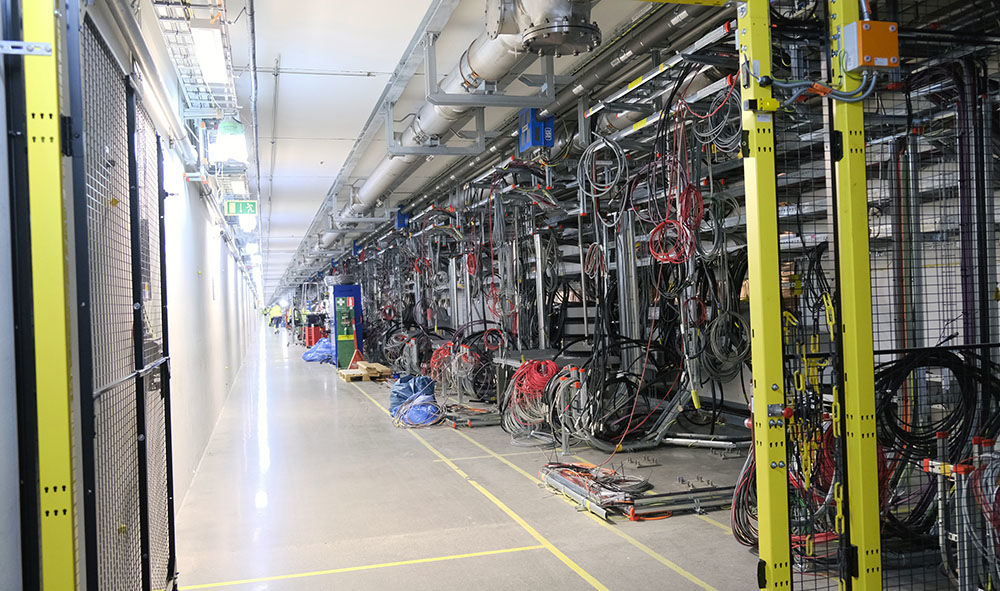
Learn more about some of the innovative solutions developed specifically for the ESS project – on the topic of ESS Accelerator & Detector Technologies in this new series of webinars brought to you by the Accelerate 2020 project, funded by the EU’s Horizon 2020 research & innovation programme.
REGISTER BELOW
More than 70% of the ESS technical scope is built using In-Kind Contributions. As a result, ESS is committed to fostering collaboration with its In-Kind Partners, all while actively engaging in joint efforts to deliver In-Kind scope on time and budget. Still, ESS is an organisation heavily focused on the future too. The future where Research Infrastructures, Innovation Clusters and Industry will be working together to harvest amazing technical and technological opportunities that ESS will provide in days to come.
Building on the success of the previous series of webinars with ESS experts, Accelerate 2020 now brings you a new series addressing the progress, challenges and opportunities in the context of the ESS Accelerator and Detector Technologies.
With the help of case studies and examples, ESS experts will provide an overview of the innovative solutions being employed to be able to build what will be the world’s most powerful neutron spallation source.
The aim of these webinars is to share knowledge about the development of ESS Accelerator & Detector Technologies with other Research Institutes, Innovation Clusters, and most importantly, Industry, in the hope that it can help build capacity in some of the key areas of ESS technologies, establish networks and communication channels with potential industrial suppliers, and raise awareness of the complexities of the ESS Project.
WEBINAR 1: 07 APRIL, 14:00 CET
Large research infrastructures and the ESS linear accelerator – a case study
This presentation will give an overview of the accelerator and its most important sub-systems, and it will describe some of the associated technical challenges. The construction is well under way, and many components have been delivered from our partners, while installation, testing and commissioning is in progress.
SPEAKER: Dr. Håkan Danared, Deputy head of Accelerator Division at the European Spallation Source.
REGISTER HERE.
WEBINAR 2: 14 APRIL, 14:00 CET
A new generation of neutron detectors and opportunities for industry
An overview of how the research and development process was carried out will be presented, to give particular insight about the interactions between a research institute developing a niche and highly specialised product, and industry. Along the way the various forms and examples of engagement with industry are noted, while synergies and interactions during this process, will be outlined.
This webinar turns out to be quite timely seeing as the construction of the detectors for ESS is just starting, leading to potential opportunities in the coming year.
SPEAKER: Dr. Richard Hall-Wilton, Group Leader Detector Technologies at the European Spallation Source.
REGISTER HERE.
WEBINAR 3: 21 APRIL, 14:00 CET
ESS and neutrinos – an exciting future ahead
The European Spallation Source (ESS), currently under construction in Lund, Sweden, is the world’s most powerful neutron spallation source, with an average power of 5 MW at 2.0 GeV. The linac accelerates a proton beam of 62.5 mA peak current at 4 % duty cycle (2.86 ms at 14 Hz). The high beam power at ESS will give excellent possibilities for measurements of possible CP violation in the leptonic sector. In the ESS neutrino Super Beam Project (ESSnuSB), it is proposed to utilise this powerful accelerator as a proton driver for a neutrino beam that will be sent to a large underground Cherenkov detector in Garpenberg, mid-Sweden. Current pion focusing schemes at the neutrino target require the pulses to be of the order of microseconds. These short pulses can be achieved by injecting the H⁻ beam into an accumulator ring by charge exchange injection before they are sent to the neutrino target. By adding a second H⁻ beam, interleaved with the proton beam, the duty cycle will be increased to 8 % and the average power to 10 MW. In this talk we discuss the required modifications of the ESS linac to reach an additional 5 MW beam power for neutrino production in parallel to the spallation neutron production.
SPEAKER: Dr. Mohammad Eshraqi, Accelerator Physicist at the European Spallation Source.
REGISTER HERE.
WEBINAR 4: 28 APRIL, 14:00 CET
Neutron converters for detectors – How ESS tackled the challenge of He3 shortage by setting up a mass production facility for depositions of thin films of 10B4C in Linköping.
Boron carbide (B4C) has been seen as one of practical substitution for helium as the neutron conversion material in neutron detectors, but applying a material in solid state, instead of gas form, also means new challenges for the production. ESS Linköping Detector Coatings Workshop has been working on the process development for reliable productions of B4C thin films in different types of neutron detectors. The thin films deposited are also examined with different analytical tools to check up the qualities, which are crucial for the iteration of further process tuning.
In this talk, a brief summary is given on why a new neutron converter technique was needed and how we upscaled from first proof of concept, to demos, and to first sharp coatings. The speak will also present the project works done to assure the quality of the depositions, to procure highly specialised materials, and to stay in close contact with industry. An overview of how opportunities arise for industries during this development and production process is noted.
In addition to the project operation, examples of the deposition processes that has been developed in the workshop will be shared, and the resulting products of B4C films from the processes. Apart from B4C, we will report the capability of depositing other materials that can also be interesting for the design of detectors, for example, metal contact layers.
SPEAKER: Dr. Linda Robinson, Section Leader Neutronic Detectors Coating and Dr. Lai Chung-Chuan, Coatings Scientist.
REGISTER HERE.
























